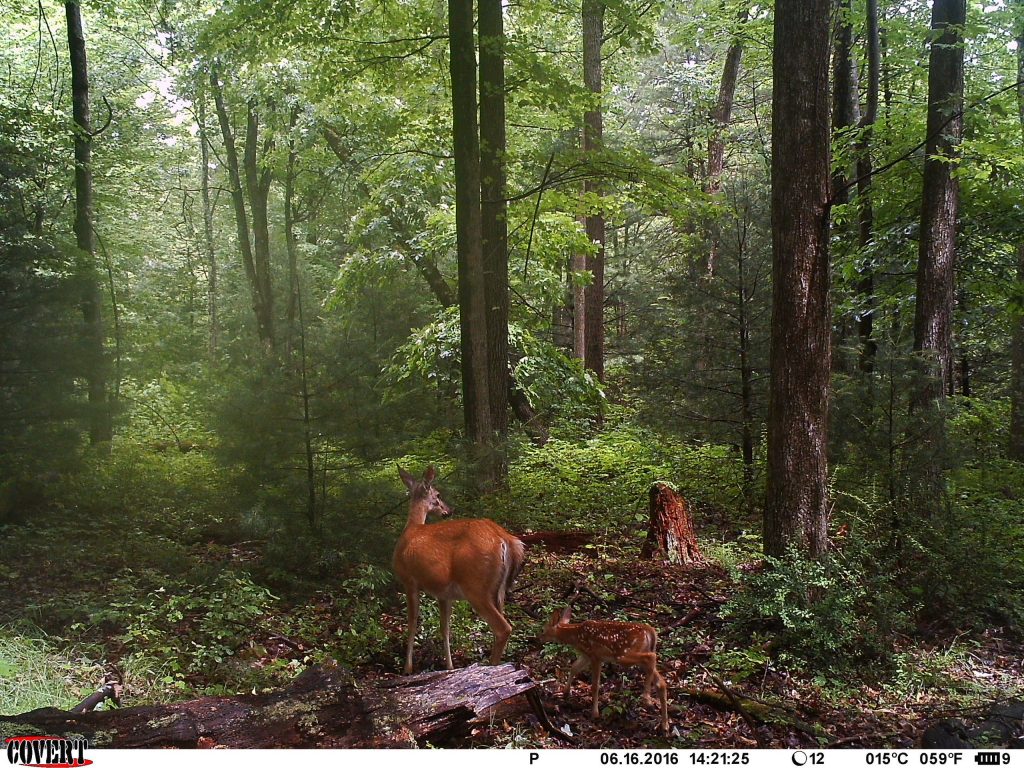The effect of predation on fawn survival can evoke hand-wringing and even despair. You’ve seen the pictures. Fawns are one of the cutest creatures on the planet. While, conceptually, people understand the circle of life, it’s not something they want put into practice. On average, about every other fawn dies before hunting season and that circle of life (i.e. predation) is the primary cause.
A fawn or any critter getting killed and eaten by another is not a pleasant image especially when they are so cute. But rather than focus on the cold, hard truth of ecosystem functionality, the question should be does it matter. Does it matter that half of the fawns born in late May are dead before school starts in the fall?
If your objective is to manage a sustainable population of white-tailed deer, then minimizing fawn predation is not a priority.
Over the past month or so we have posted a series of articles on the findings from our research on fawns and predators. Tess Gingery showed how fawn survival varies across the eastern U.S. and that except for a couple of studies in the southeastern U.S., in most places fawn survival varies from 50% – 80% for the first 6 months of life. The more agriculture in a landscape the greater survival and less predation but human-related mortality increases in less forest-dominated landscapes.
In Pennsylvania, black bears, coyotes, and bobcats are the primary predators of fawns in that order with black bears and coyotes pretty much tied for 1st place. Yet despite the expanding predator populations in Pennsylvania, we found no difference in fawn survival between two studies in Pennsylvania separated by over a decade in time.
It is almost uncanny how similar fawn survival is between them. In our Big Woods of northern PA we recorded 0.38 survival in 2000-2001 and 0.40 survival in 2015-2017 (for 34 weeks – 8.5 months). In the Ridge and Valley region we recorded 0.53 survival in 2000-2001 and 0.51 survival in 2015-2017.
And while deer may be known as the ghost of the forest for good reason, they still can be photographed. Asia Murphy captured adult deer at 97% of her game camera locations. From those camera surveys, adult deer are everywhere and fawns are not…but neither are predators.
In that never-ending game of cat and mouse (or bear and fawn), one is always trying to outsmart the other. The stakes are much higher for the fawn, of course. What we discovered is that fawns were more likely to occur where predators were least likely to occur. Predators are less likely to use farmland habitat. So guess what habitat fawns are more likely to use? This helps to explain Tess’ findings that fawns in more agricultural landscapes had higher survival rates.
This fawn survival thing has been part of my career for a long time. My colleagues and I published a paper a few years ago looking at the population dynamics of white-tailed deer and when fawn survival could be a problem for deer managers. Our conclusion – population decline would only occur if fawn survival was <25% AND adult female survival was <75%. In all other scenarios harvest of antlerless deer was REQUIRED to stabilize deer populations.
How could fawn survival be as low as 30% and deer populations continue to grow? Look no further than those superhero does. Adult female survival is the most important factor driving the population dynamics of ungulate species.
Without hunting in Pennsylvania, annual survival can be as high as 90-95% in some management units (and I have never observed lower than 85%). And adult females (≥2 years old) are fawn producing machines – averaging 1.6 fawns each year…year after year for her entire life which may exceed a decade.
With that kind of reproductive power, fawn survival does not have to be very high to lead to population growth.
Should we be concerned about the circle of life in Pennsylvania? No. Other than our own discomfort with it, fawns being on the menu of bears, coyotes, and bobcats are no big deal.
Besides there is not much you can do about it. Controlling coyote numbers is impractical and likely impossible and Pennsylvania bear hunters do not want fewer bears. And let’s not forget the important role tahini…I mean…predators play in our ecosystem.
After monitoring the fates of 383 fawns and logging thousands of photos of predators, how much do I worry about fawn survival? Not one bit.
But hey, fawns are cute.
-Duane Diefenbach
Previous articles in this series:
Fawns, Predators, and Deer Populations-what’s the bottom line on fawn survival?
Bunches, Heaps, and Gobs of Fawns
Land of the Living
A Million Ways to Die
Don’t Run that Way
Who’s Eating Bambi? – North America Edition
All Good Things
Time May Change Me
Living Outside of the Box
Elasti-Doe
Perfect Recipe
If you would like to receive email alerts of new blog posts, subscribe here.
And Follow us on Twitter @WTDresearch
